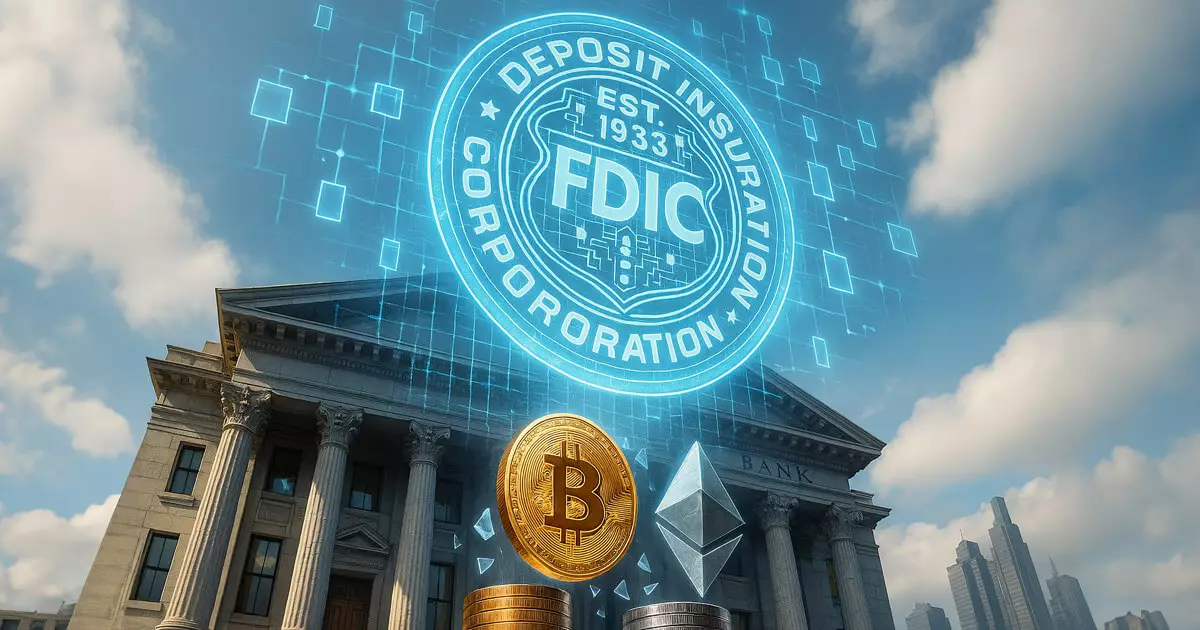The paradigm shift within the Federal Deposit Insurance Corporation (FDIC) represents a significant milestone in the regulatory dialogue surrounding cryptocurrency in the United States. Previously characterized by caution, the FDIC is now embracing a markedly more permissive stance towards the integration of digital assets within the banking framework. Acting Chairman Travis Hill’s recent remarks highlight a crucial evolution in regulatory philosophy, proposing a framework inclusive of public, permissionless blockchains—a move that signals an exciting turning point for both banks and the fintech sector.
For far too long, the U.S. has lagged behind international counterparts in recognizing the potential of public blockchains. The restrictive policies imposed on banks have stifled innovation and limited opportunities for financial institutions to explore this transformative technology. With jurisdictions such as the European Union leading the way in banking’s adoption of crypto, the FDIC’s pivot away from a strict prohibition could enhance America’s competitive edge.
Balancing Innovation with Accountability
However, this openness comes with caveats. Hill’s call for “appropriate guardrails” on the use of public blockchains undoubtedly emphasizes a center-right approach aimed at ensuring the safety and soundness of financial institutions. While innovation should not be stifled, it is critical to establish frameworks that protect consumers and maintain systemic integrity. The FDIC rightly recognizes the need for robust standards governing blockchain utilization in banking operations.
Moreover, the complexities of distinguishing between permissioned and permissionless environments will demand a nuanced regulatory approach. For too long, uncertainty surrounding the boundaries of acceptable practices has hindered banks from entering the digital asset space. By promising to clarify these lines, the FDIC is addressing a vital concern that could lead to a more dynamic banking sector that effectively leverages blockchain technology while navigating its unique challenges.
Reexamining Deposit Insurance in the Age of Stablecoins
The discussion surrounding stablecoins is particularly fascinating, signifying a critical juncture for regulatory bodies. The FDIC is now deliberating the implications of stablecoins on deposit insurance eligibility, likely sparking an important conversation within the halls of Congress. The ramifications of these decisions will echo throughout the financial community.
In a landscape where liquidity risk and cybersecurity issues loom large, the FDIC’s cautious yet open-minded stance is commendable. The agency is tasked with addressing these challenges proactively, focusing on safeguarding the integrity of financial transactions while simultaneously allowing the cryptocurrency sector to flourish. Hill’s comments underscore a vital point: deposits must be viewed uniformly, regardless of whether they are recorded via conventional means or on blockchain technology. This perspective evokes a refreshing sense of adaptability that is necessary in our increasingly digitized world.
The Loose Ends of Blockchain Integration
Nevertheless, questions linger regarding the implications of using smart contracts in the event of a bank failure—an area that remains inadequately explored. The concern that funds could be withdrawn at par during turbulent times raises alarm bells among regulators. Ensuring that safeguards are in place to manage such outflows is paramount to protecting the overall stability of the banking system. Thus, while the FDIC’s embrace of blockchain technologies is laudable, the agency must also strive for a deeper understanding of the potential vulnerabilities introduced by these innovations.
Additionally, the FDIC’s efforts to redefine permissible activities around tokenized assets require careful consideration. The complexity of tokenization needs to be matched by equally sophisticated regulatory measures that can adapt to rapid technological changes. The increased need for clearer regulatory treatment indicates an awareness that the financial landscape is changing, and regulators must not only adapt but also anticipate future developments.
The FDIC’s evolving stance represents a shift towards a more innovative and transparent banking sector while still emphasizing accountability and sound risk management. The path ahead is fraught with challenges, but embracing change and committing to a balanced regulatory approach could ultimately benefit both financial institutions and consumers alike.

